Abstract
A chemotactic factor has been isolated from cultures and culture filtrates of many members of the group of anaerobic coryneform bacteria which includes various strains of Corynebacterium parvum. This factor attracts guinea-pig and mouse peritoneal exudate macrophages specifically and fails to attract either human blood neutrophils or guinea-pig peritoneal exudate neutrophils. Its activity is serum-independent. It is non-dialysable and destroyed by boiling. There is strong, positive correlation between the capacity of individual strains of anaerobic coryneforms to produce this macrophage chemotactic factor and the capacity of the same micro-organisms, when injected in vivo into mice, to enhance the clearance of carbon from the circulation.
Full text
PDF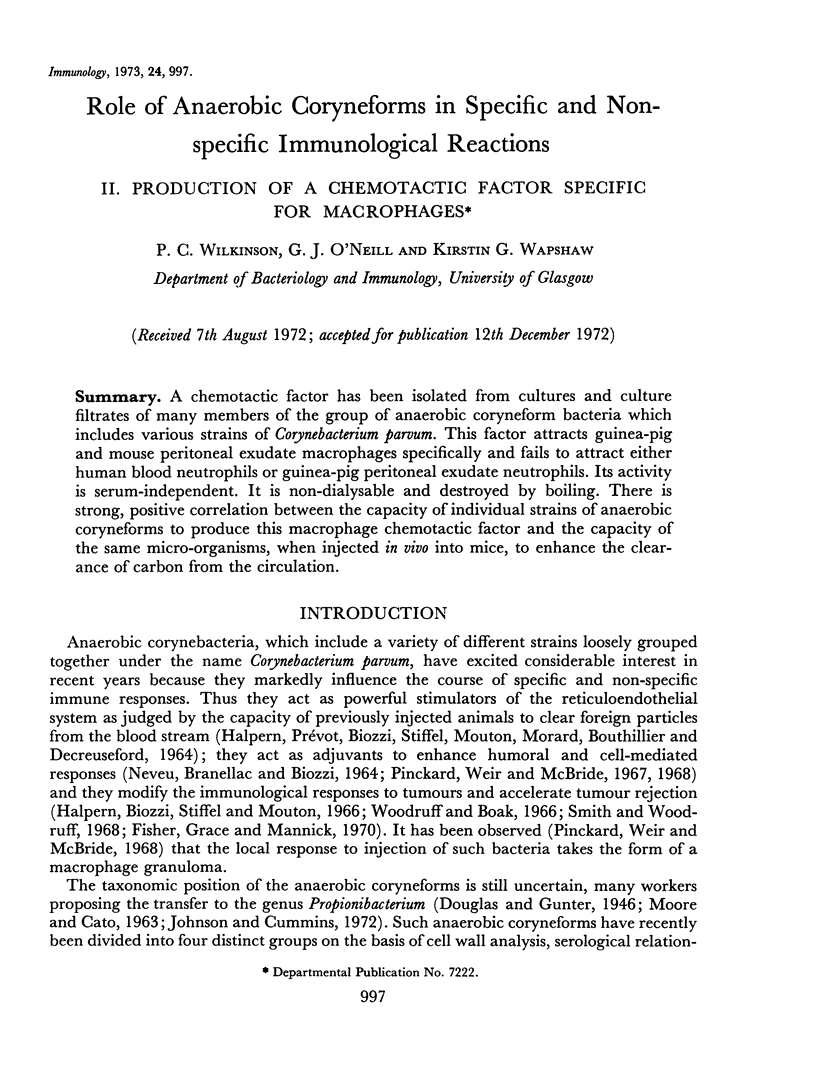

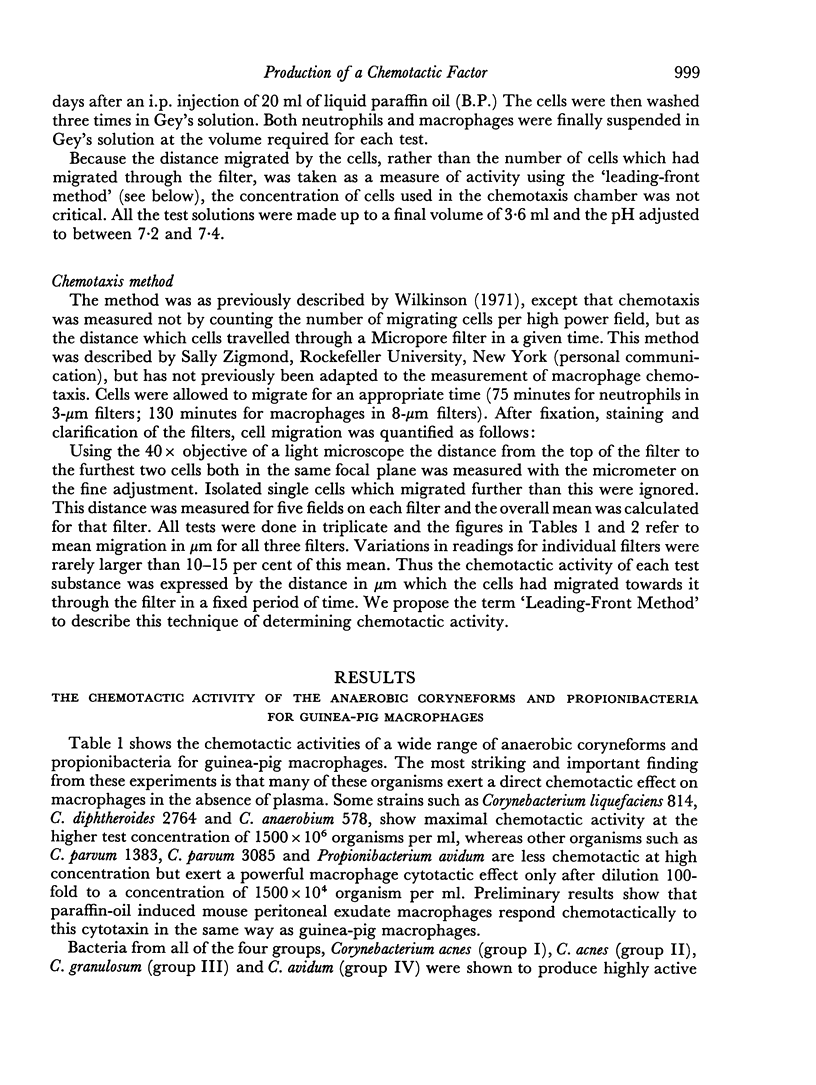
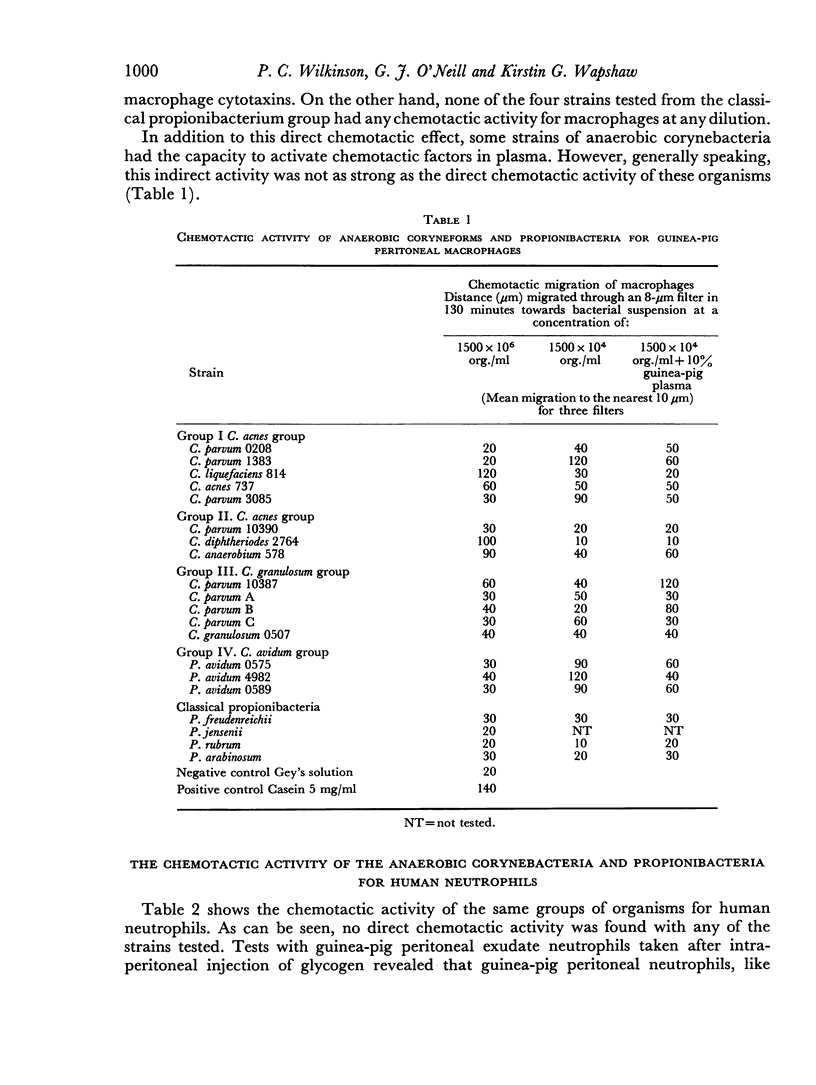

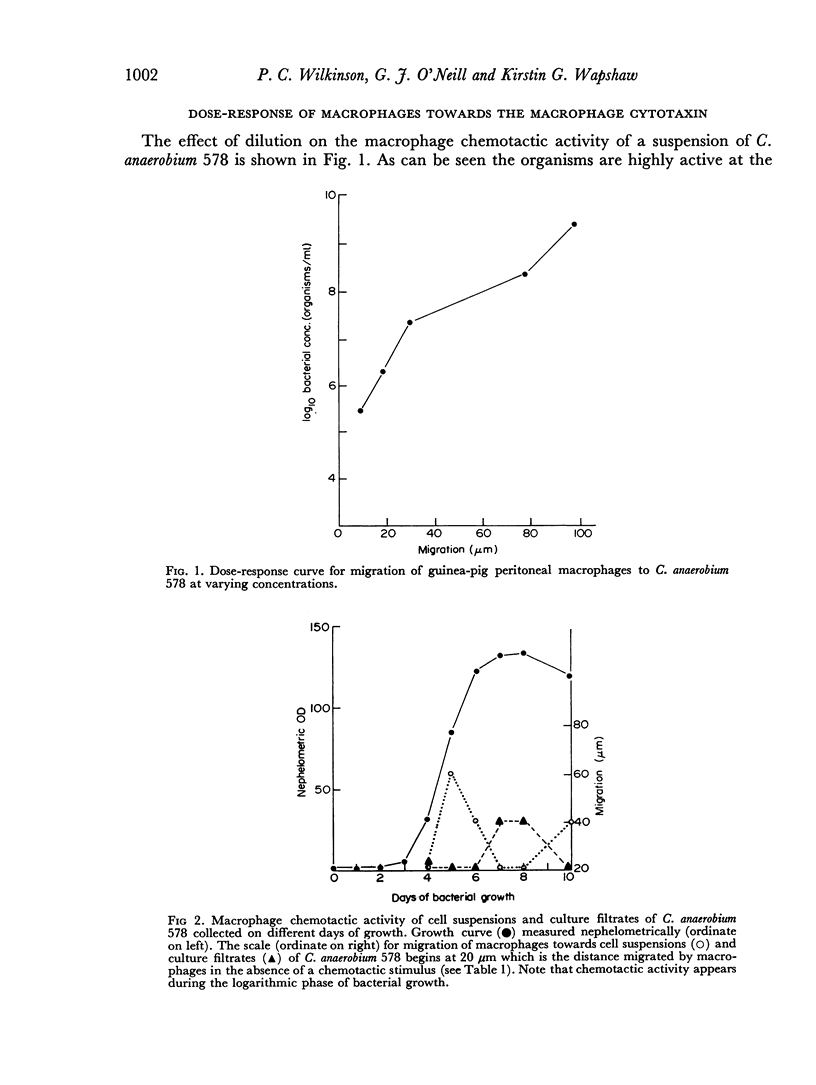
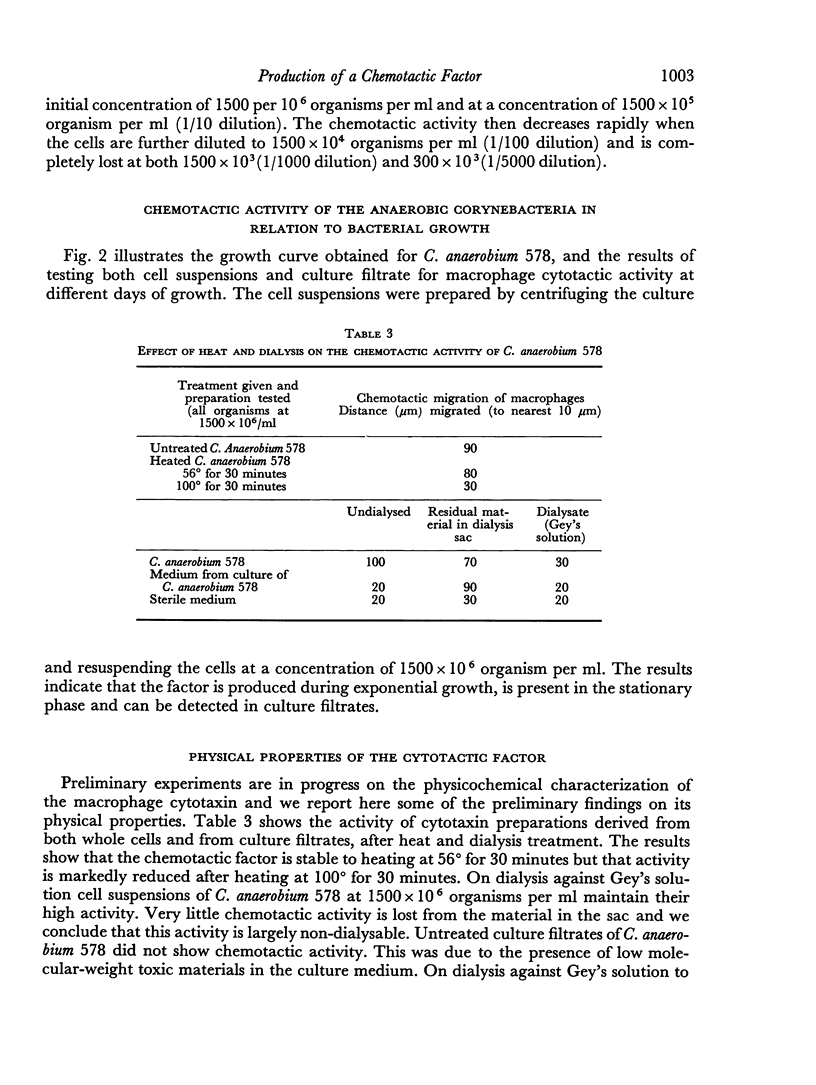

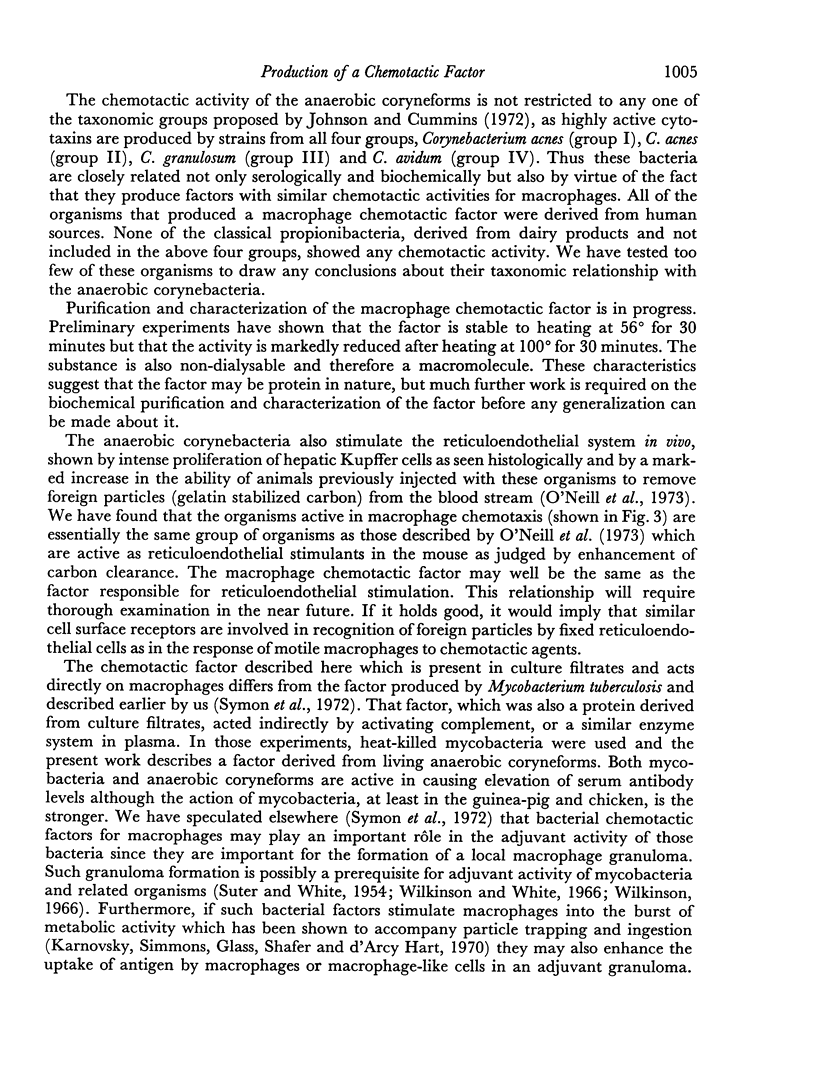
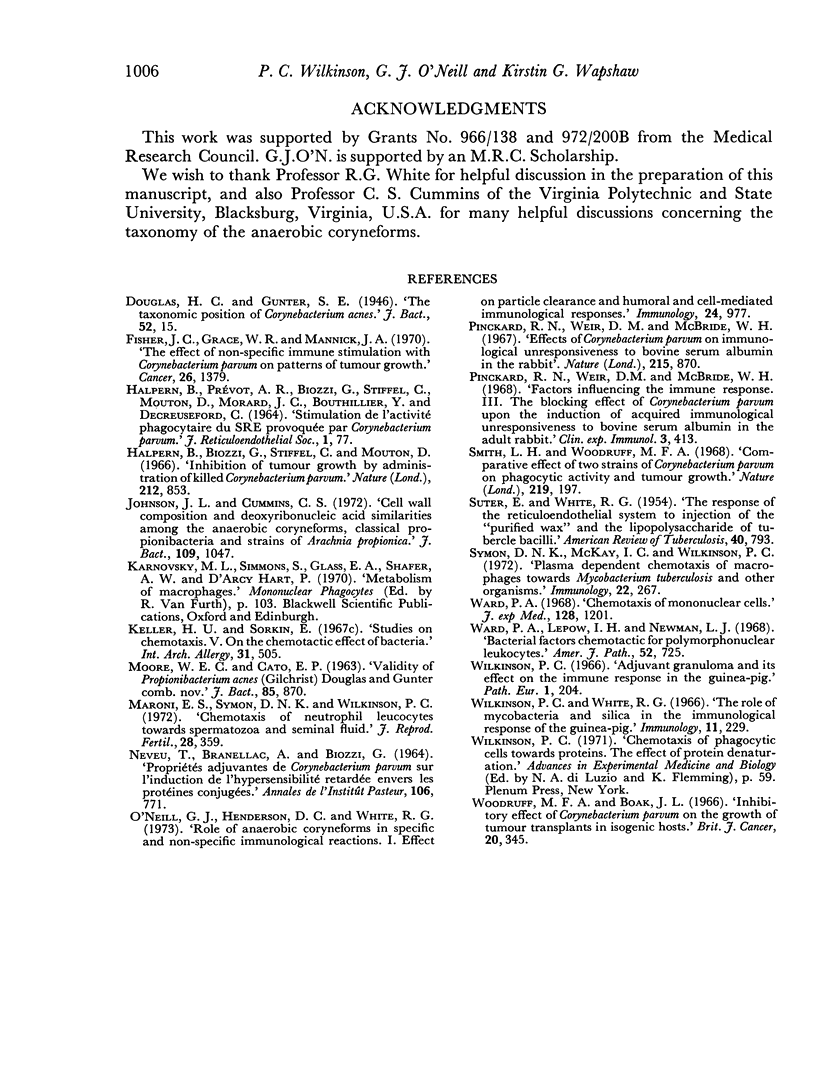
Selected References
These references are in PubMed. This may not be the complete list of references from this article.
- Douglas H. C., Gunter S. E. The Taxonomic Position of Corynebacterium acnes. J Bacteriol. 1946 Jul;52(1):15–23. [PMC free article] [PubMed] [Google Scholar]
- Fisher J. C., Grace W. R., Mannick J. A. The effect of nonspecific immune stimulation with corynebacterium parvum on patterns of tumor growth. Cancer. 1970 Dec;26(6):1379–1382. doi: 10.1002/1097-0142(197012)26:6<1379::aid-cncr2820260630>3.0.co;2-4. [DOI] [PubMed] [Google Scholar]
- HALPERN B. N., PREVOT A. R., BIOZZI G., STIFFEL C., MOUTON D., MORARD J. C., BOUTHILLIER Y., DECREUSEFOND C. STIMULATION DE L'ACTIVIT'E PHAGOCYTAIRE DU SYST'EME R'ETICULOENDOTH'ELIAL PROVOQU'EE PAR CORYNEBACTERIUM PARVUM. J Reticuloendothel Soc. 1964 Jan;1:77–96. [PubMed] [Google Scholar]
- Halpern B. N., Biozzi G., Stiffel C., Mouton D. Inhibition of tumour growth by administration of killed corynebacterium parvum. Nature. 1966 Nov 19;212(5064):853–854. doi: 10.1038/212853a0. [DOI] [PubMed] [Google Scholar]
- Johnson J. L., Cummins C. S. Cell wall composition and deoxyribonucleic acid similarities among the anaerobic coryneforms, classical propionibacteria, and strains of Arachnia propionica. J Bacteriol. 1972 Mar;109(3):1047–1066. doi: 10.1128/jb.109.3.1047-1066.1972. [DOI] [PMC free article] [PubMed] [Google Scholar]
- MOORE W. E., CATO E. P. VALIDITY OF PROPIONIBACTERIUM ACNES (GILCHRIST) DOUGLAS AND GUNTER COMB. NOV. J Bacteriol. 1963 Apr;85:870–874. doi: 10.1128/jb.85.4.870-874.1963. [DOI] [PMC free article] [PubMed] [Google Scholar]
- Maroni E. S., Symon D. N., Wilkinson P. C. Chemotaxis of neutrophil leucocytes towards spermatozoa and seminal fluid. J Reprod Fertil. 1972 Mar;28(3):359–368. doi: 10.1530/jrf.0.0280359. [DOI] [PubMed] [Google Scholar]
- NEVEU T., BRANELLEC A., BIOZZI G. PROPRI'ET'ES ADJUVANTES DE CORYNEBACTERIUM PARVUM SUR LA PRODUCTION D'ANTICORPS ET SUR L'INDUCTION DE L'HYPERSENSIBILIT'E RETARD'EE ENVERS LES PROT'EINES CONJUGU'EES. Ann Inst Pasteur (Paris) 1964 May;106:771–777. [PubMed] [Google Scholar]
- O'Neill G. J., Henderson D. C., White R. G. The role of anaerobic coryneforms on specific and non-specific immunological reactions. I. Effect on particle clearance and humoral and cell-mediated immunological responses. Immunology. 1973 Jun;24(6):977–995. [PMC free article] [PubMed] [Google Scholar]
- Pinckard R. N., Weir D. M., McBride W. H. Effects of Corynebacterium parvum on immunological unresponsiveness to bovine serum albumin in the rabbit. Nature. 1967 Aug 19;215(5103):870–871. doi: 10.1038/215870a0. [DOI] [PubMed] [Google Scholar]
- Pinckard R. N., Weir D. M., McBride W. H. Factors influencing the immune response. 3. The blocking effect of Corynebacterium parvum upon the induction of acquired immunological unresponsiveness to bovine serum albumin in the adult rabbit. Clin Exp Immunol. 1968 Jun;3(5):413–421. [PMC free article] [PubMed] [Google Scholar]
- SUTER E., WHITE R. G. The response of the reticulo-endothelial system to the injection of the purified wax and the lipopolysaccharide of tubercle bacilli; a histologic and an immunologic study. Am Rev Tuberc. 1954 Nov;70(5):793–805. doi: 10.1164/art.1954.70.5.793. [DOI] [PubMed] [Google Scholar]
- Smith L. H., Woodruff M. F. Comparative effect of two strains of C. parvum on phagocytic activity and tumour growth. Nature. 1968 Jul 13;219(5150):197–198. doi: 10.1038/219197a0. [DOI] [PubMed] [Google Scholar]
- Symon D. N., McKay I. C., Wilkinson P. C. Plasma-dependent chemotaxis of macrophages towards mycobacterium tuberculosis and other organisms. Immunology. 1972 Feb;22(2):267–276. [PMC free article] [PubMed] [Google Scholar]
- Ward P. A. Chemotoxis of mononuclear cells. J Exp Med. 1968 Nov 1;128(5):1201–1221. doi: 10.1084/jem.128.5.1201. [DOI] [PMC free article] [PubMed] [Google Scholar]
- Ward P. A., Lepow I. H., Newman L. J. Bacterial factors chemotactic for polymorphonuclear leukocytes. Am J Pathol. 1968 Apr;52(4):725–736. [PMC free article] [PubMed] [Google Scholar]
- Wilkinson P. C. Adjuvant granuloma and its effect on the immune response in the gunea pig. Pathol Eur. 1966;1(1):204–216. [PubMed] [Google Scholar]
- Wilkinson P. C., White R. G. The role of mycobacteria and silica in the immunological response of the guinea-pig. Immunology. 1966 Sep;11(3):229–241. [PMC free article] [PubMed] [Google Scholar]
- Woodruff M. F., Boak J. L. Inhibitory effect of injection of Corynebacterium parvum on the growth of tumour transplants in isogenic hosts. Br J Cancer. 1966 Jun;20(2):345–355. doi: 10.1038/bjc.1966.42. [DOI] [PMC free article] [PubMed] [Google Scholar]


